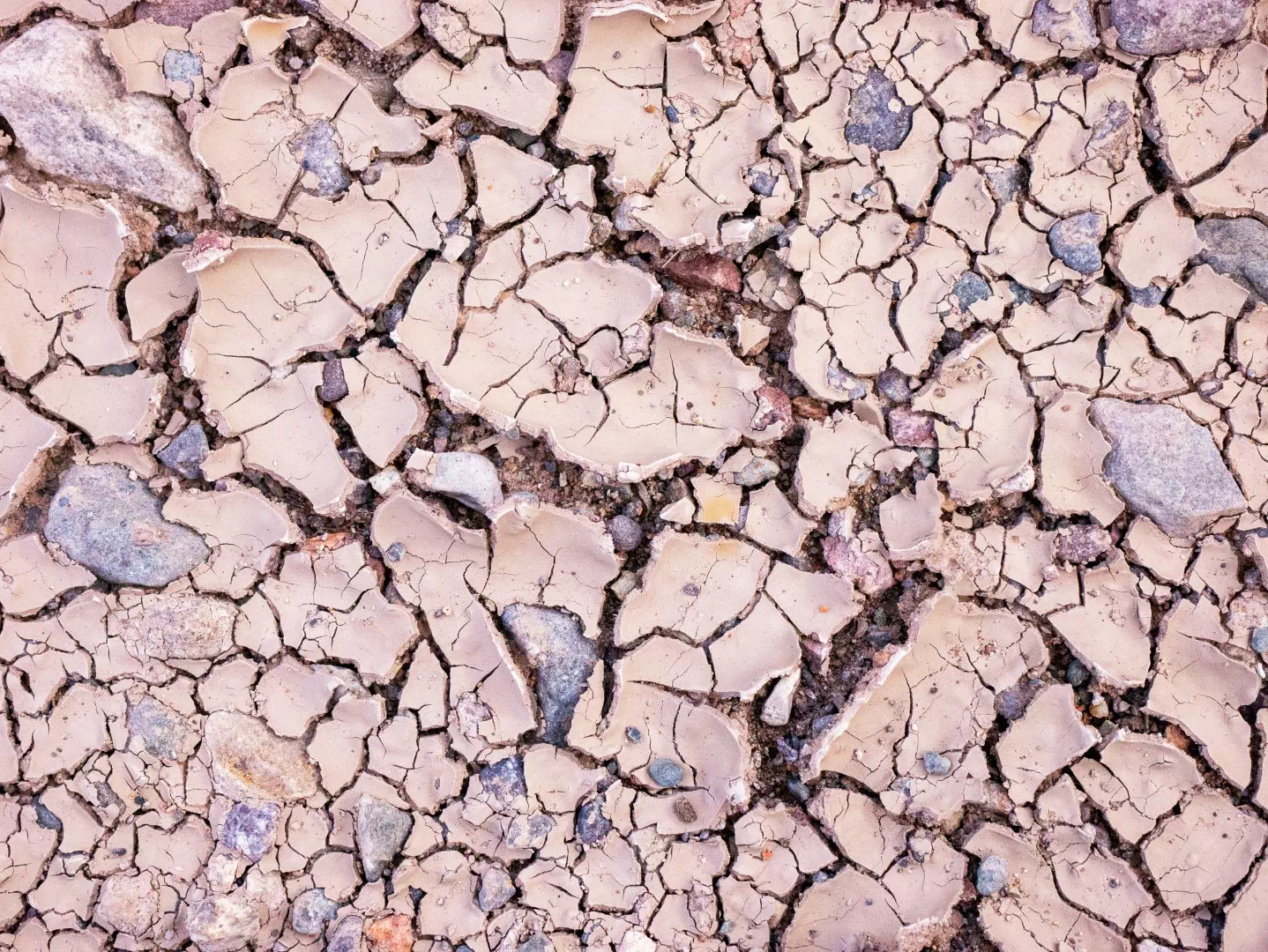
Blog
Clay Shrink Swell causes property damage and financial risks for homeowners
09th of October 2024

© from Unsplash.
In an era of increasingly unpredictable events from the adverse effects of climate change, the need for robust adaptation strategies has never been greater. For homeowners in certain regions, property damage caused by clay shrink swell is emerging as a notable risk.
What is clay shrink swell?
A clay shrink swell (CSS) event occurs when soil rich in clay expands and contracts from weather events such as droughts, heatwaves and rainfall. When it rains, clay soils absorb water and dilate just like a sponge. The water contained in the clay evaporates and the clay soil shrinks. The drying out of the soil creates both horizontal cracks on the surface and vertical hydromechanical settlement under the weight of the structures – and can cause property damage from minor cracks to severe structural issues, and costly repairs for homeowners.

Figure 1: Illustration of clay shrink swell event causing property damage (Gruslin et al. 2022, modified from DPPR-SDPRM 2008).
In France, 48% of the national territory is at medium or high risk of CSS, potentially affecting 10.4 million single-family houses. And CSS events can occur wherever there is at least 10% clay in the soil composition. Climate change, by exacerbating patterns of alternating drought and heavy rainfall, is projected to increase the risk of CSS event occurring and presents homeowners with both immediate and long-term risks that require proactive measures.
How does home insurance work (and not work) for clay shrink swell in France?
In France, a national mechanism called Cat Nat is a
compensation scheme for homeowners (and others) for
damage caused by officially recognised natural
catastrophes. The Cat Nat scheme operates together
with typical home insurance contracts to reinsure
insurers who pay out to homeowners in relation to a
natural catastrophe. Two conditions must be met for
a CSS event to qualify as a natural catastrophe
under the Cat Nat scheme: (1) the area must have at
least 3% of its surface mapped as shrinkable clay;
and (2) there must be an exceptional drought period.
Unfortunately, the process to declare a natural
catastrophe is complex and slow, often leaving
homeowners waiting for years before receiving
compensation—if at all. Over the last decade, half
of all requests for official recognition of CSS
events as natural catastrophes have been
unsuccessful. Furthermore, even when compensation is
granted, the payout process can take more than two
years until homeowners receive payment. This
uncertainty and the associated delays underscore
urgent need for better homeowner education regarding
the risks associated with CSS and more efficient
mechanisms for disaster recognition and
compensation.
Introducing the Clay Shrink Swell Building Damage Assessor
The PIISA Clay Shrink Swell Building Damage Assessor will be an online website designed to educate homeowners about their financial risks associated with inadequate insurance cover for property damage caused by CSS events and provide information and guidance on how to mitigate these risks. The online tool will guide users through a process that includes:
-
Specifically, climate change attribution can
contribute to:
- Understanding CSS risks: Homeowners will receive easy-to-understand information which illustrates how the risk of CSS events occurring may increase due to climate change.
- Financial risk information: By entering their address, homeowners can see if their property is in a high, medium or low risk area for CSS occurring and receive various financial risk metrics in a way which is easily understandable for homeowners.
- Actionable information: Homeowners will receive a PDF download of information on steps they can take to reduce their risk.
The Clay Shrink Swell Building Damage Assessor will be pilot tested in Lyon, the capital city in France’s Auvergne-Rhône-Alpes region, which sits at the junction of the Rhône and Saône rivers.

Figure 2: Location of the Clay Shrink Swell Building Damage Assessor pilot
Following the pilot and taking account of lessons learned in the process, the Clay Shrink Swell Building Damage Assessor will be replicated in other cities and regions in France. Concurrently with this replication in other cities and regions in France we will research the risk level and insurance framework for other EU countries to identify demand for replication of the Clay Soil Shrinkage Building Damage Assessor in other EU countries.
Why this matters
The Clay Shrink Swell Building Damage Assessor is designed to help homeowners not only understand their financial risks from CSS events but also take steps to mitigate them. By providing detailed, localised information, the tool encourages homeowners to engage with insurers and local authorities to ensure their properties are adequately protected in the face of escalating climate risks. And it is focussed on raising homeowner awareness of the issue in the hope that this will leverage pressure on the insurance industry to address the issue therefore serving as a vital tool for closing the adaptation gap in regions vulnerable to CSS.
Authors
- Gozde Mavili and David Cooke, Sustainable Finance Observatory
References
DPPR-SDPRM. 2008. Le retrait-gonflement des argiles. Comment prévenir les désordres dans l’habitat individuel? Collection prévention risques naturels majeurs. Ministère de l'écologie, du développement et de l'aménagement durables : direction de la prévention des pollutions et des risques (DPPR-SDPRM). Paris.
Gruslin, S., Hennebaut, T. & Tirone, M. 2022. How to ensure better consideration and mitigation of the shrinkage–swelling risk of clays? European Geologist, 53, 20–28.
https://doi.org/10.5281/zenodo.6882354,https://creativecommons.org/licenses/by/4.0/